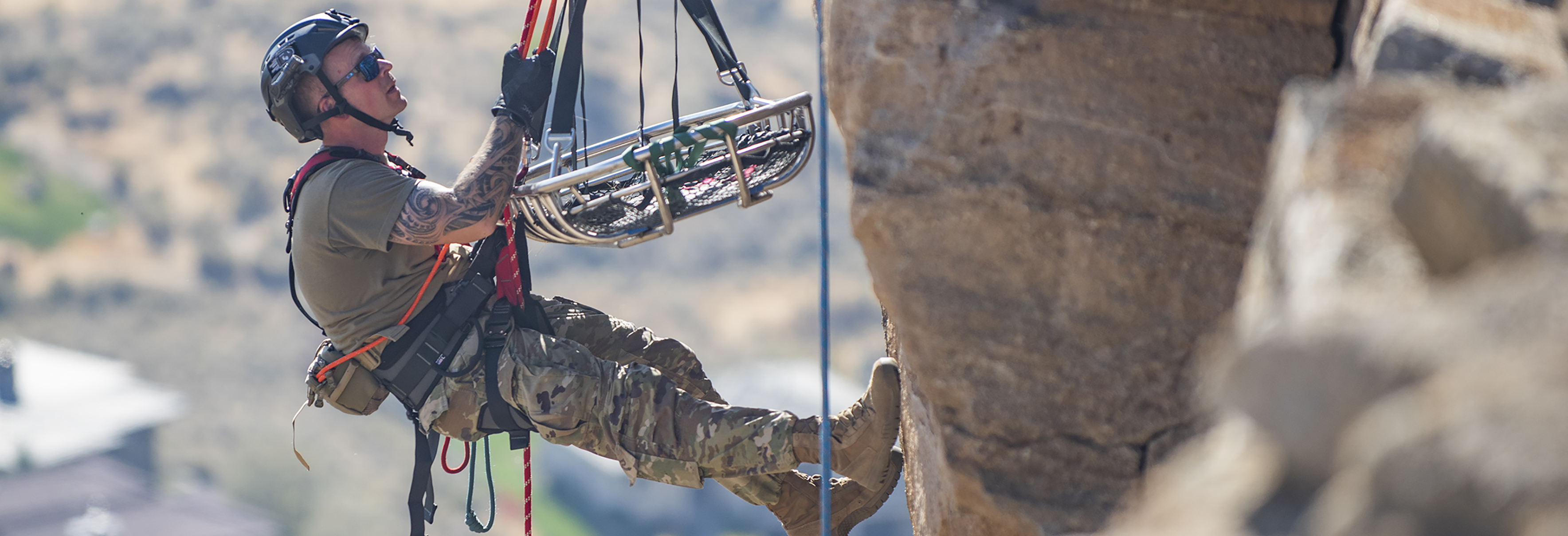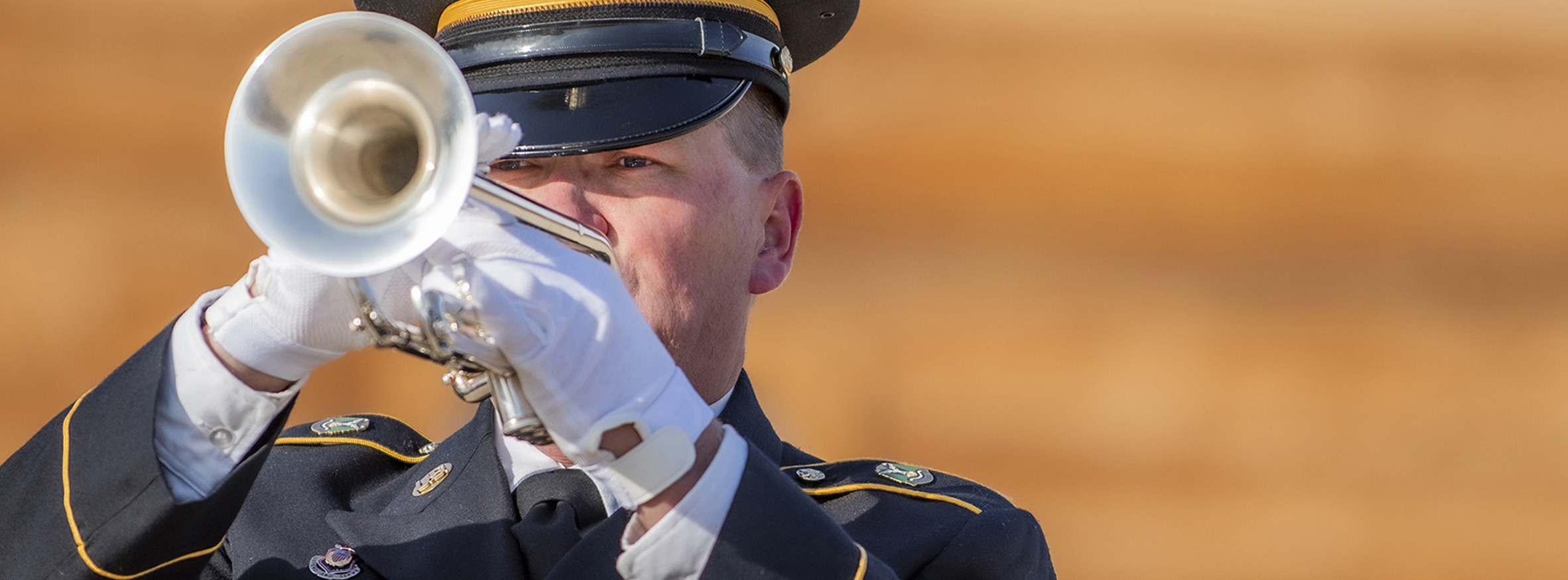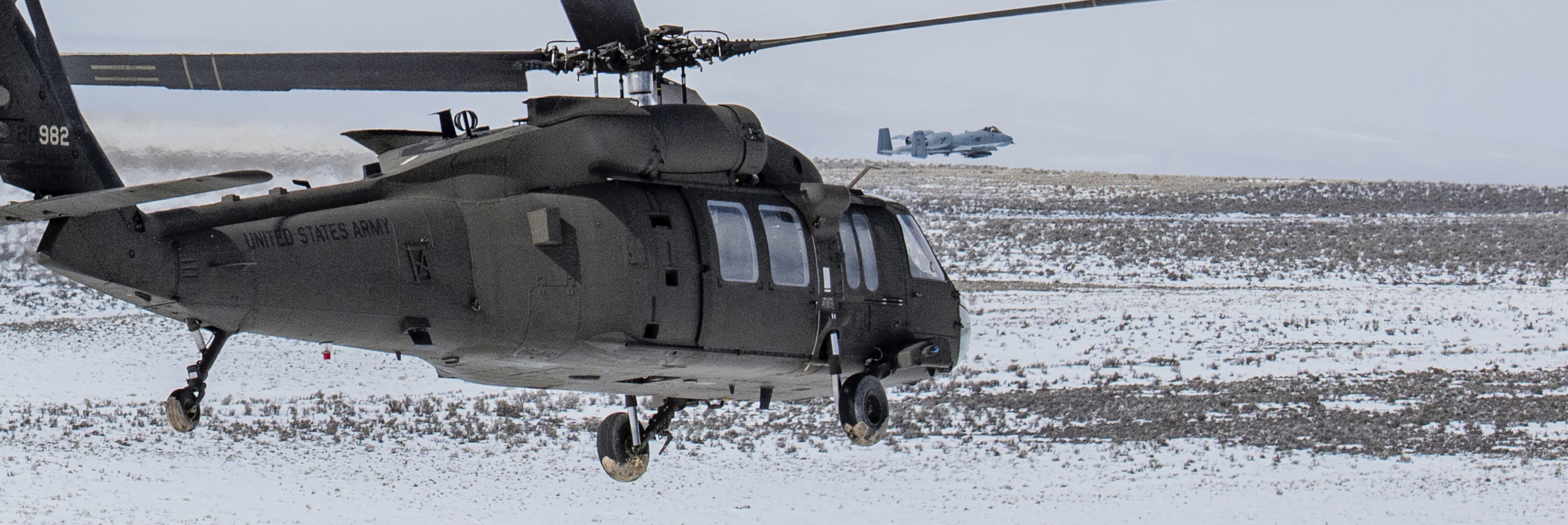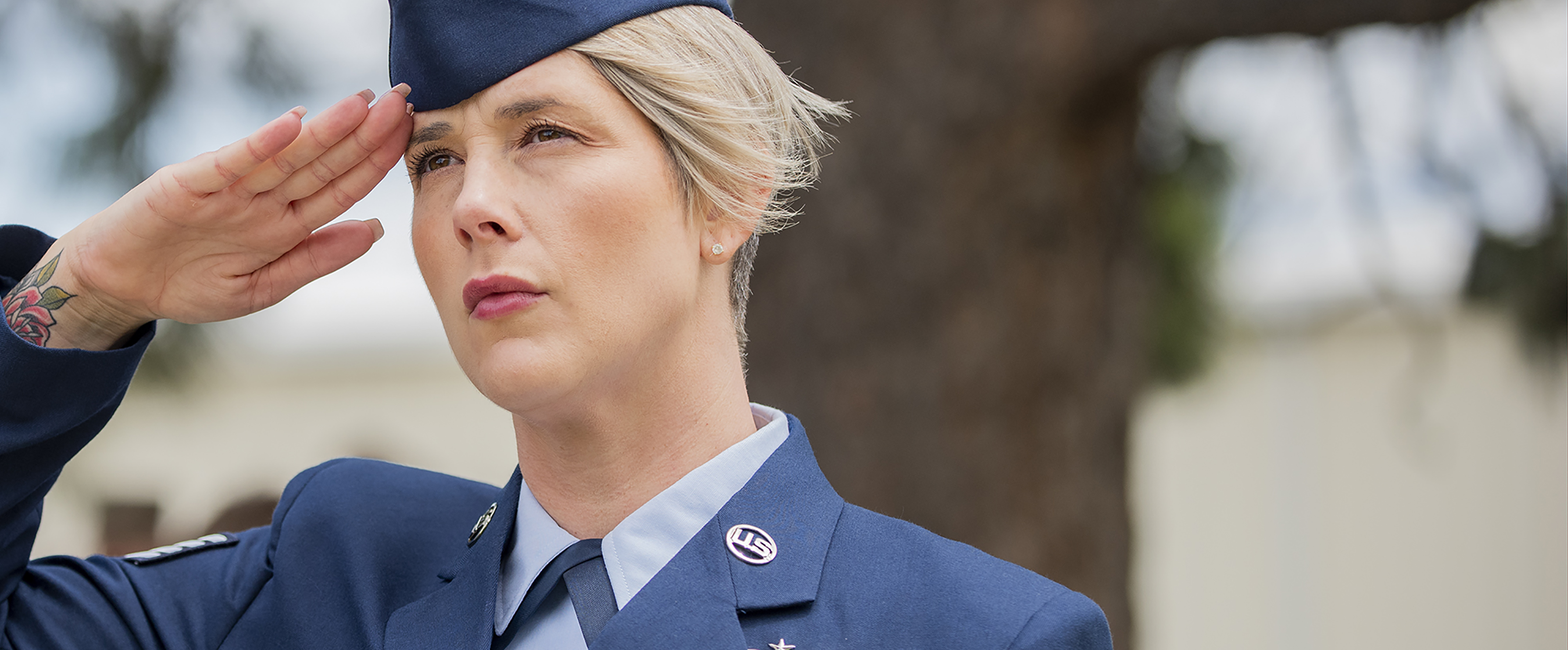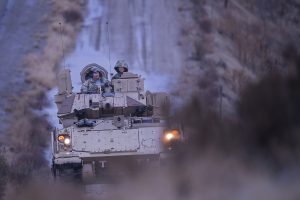 The 1/204th ATB provides individual armor training to support all three components of the Army. It is employed as the Armor subject matter expert for the ARNG and executes coordinating authority and quality assurance oversight for functionally aligned training companies.
The 1/204th ATB provides individual armor training to support all three components of the Army. It is employed as the Armor subject matter expert for the ARNG and executes coordinating authority and quality assurance oversight for functionally aligned training companies.
The ATB utilizes the most experienced National Guard instructors in the nation. The battalion has a history of facilitating relevant and accurate training since 1984. It executes The Adjutant General’s (TAG) directed training to sustain essential warfighting skills among cadre and students.
The battalion operates at a high tempo with year round training. The utilization of training during all 4 seasons in the high mountain desert environment of Idaho creates the best well rounded warfighters of this generation. The instructors and staff at the 1/204th ATB are experienced Soldiers dedicated to training over 375 Soldiers per year.
COURSE OFFERINGS
• 19D Military Occupational Specialty Reclassification (MOS-R)
• 19D Advanced Leader Course (ALC)
• 19D Bradley Commander’s Course
• 19D Transition Course
• SUAS (RAVEN) Operator Course
• 19K M1A1 Military Occupational Specialty Reclassification (MOS-R)
• 19K M1A2 SEPV2 MOS-R
• 19K Advanced Leader Course (ALC)
• 19K M1A1 Tank Commander’s Course
• 19K M1A2 SEPV2 Tank Commander’s Course
• 19K Transition Course
Return back to the main 204th RTI page
CAVALRY SCOUT (MOS-RECLASSIFICATION)
The Cavalry Scout MOS Transition is a 20 day unphased course. This course focuses on skill level 1 and some skill level 2 tasks. This course is conducted at an Armor OASS institution while in an Active Duty for Training (ADT) status. Instruction includes map reading, vehicle familiarization, reconnaissance, weapons and ammunition identification, vehicle and aircraft identification, demolitions, communications, land navigation, weapons, and maintenance and operation of a HMMWV and BFV.
Special Information:
Upon completion of this course, Soldiers will be awarded ASI of B9. 19D OSUT: The following are graduation requirements. (19D) MOS-T requires the Soldier to: Participate in and complete all MOS specific training events. Only 1 event is waiverable per Soldier, per cycle-complete 12 Mile Foot march (HPDT) in 5 hours (day and 5 and half hours at night). Total weight carried not to exceed 68 lbs. (standards from HPDT) Complete advance Land navigation course and training Perform PMCS task on vehicles and equipment Scout Gunnery Skills Test (SGST) Participate in all Live Fire Exercise HPDT tasks (Graduation requirement is to pass all 19D HPDT requirements in accordance with documented standards) 1. Drag a casualty to safety (Dismounted) 2. Conduct a 12 Mile Foot March 3. Employ Hand Grenades 4. Carry and Emplace Sand Bags 5. Remove a Casualty from a Armored Vehicle (Mounted) 6. Lift and Move the 25mm Feeder 7. Load TOW Missile Launcher on the BFV.
CAVALRY SCOUT (TRANSITION)
Cavalry Scout (Transition) is a MOS producing, UnPhased course that transitions (within CMF 19) and reclassifies (outside CMF 19) Active Army (AA) and Reserve Component (RC) Sergeants and Staff Sergeants into MOS 19D Cavalry Scouts while in an Active Duty for Training (ADT) status using Small Group Instruction (SGI). Course Outcomes: Cavalry Scout Sergeants and Staff Sergeants who are adaptive leaders, critical & creative thinkers, and proficient with the technical and tactical skills and knowledge necessary to serve as the commander’s eyes and ears on the battlefield at the section/squad level during unified land operations. Capable of engaging the enemy, tracking and reporting enemy activity, and directing the employment of weapon systems.
Special Information:
Graduates of this course will be required to attend the Maneuver Senior Leader Course (SLC). Successful completion of this course will award the Military Occupational Specialty (MOS) of 19D with Additional Skill Identifier (ASI) of B9. S2020 tasks: Graduation requirement is to pass all 19D High Physical Demands Tasks (HPDT) requirements in accordance with documented (Armor HPDT Testing SOP, dated 14 February 2017) standards: 1. Conduct a 12 Mile Foot March 2. Drag a Casualty to Safety 3. Engage a Target with a Hand Grenade at 35m 4. Lift and Move a 69lb Duffle Bag 5. Lift and Carry 35lb Sandbags 6. Remove M242 Feeder Assembly 7. Load the TOW Missile Launcher on a BFV AA SFC course attendance requires an Exception to Policy (ETP) that must be approved by the USAARMS. The Chief of Armor (USAARMS) is the waiver approval authority for this course. Students requesting course/phase prerequisite waivers (e.g. AOC/MOS,Rank/Grade, Medical/Physical Standards, etc.) or units requesting changes to POI content (e.g. during “on site” course conducts (MTT) request to delete/modify lessons/blocks of instruction, shortage of equipment, etc.) will submit their request through the first LTC Commander in their chain of command. Waivers may be submitted electronically to the following email or by mail to the CoAR office: usarmy.benning.mcoe.mbx.armor-ocoa@mail.mil CHIEF OF ARMOR U.S. ARMY ARMOR SCHOOL 1 KARKER STREET SUITE 6600 FORT BENNING, GA 31905 Waivers (minus Medical/Physical) must be submitted NLT 75 days prior to the class start date. Waivers for Medical/Physical requirements must be submitted NLT 90 days prior to class start date.
CAVALRY SCOUT ALC PH 1
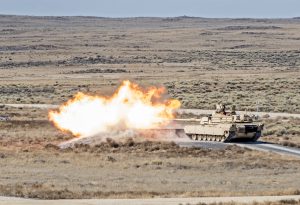 Cavalry Scout (Transition) is a MOS producing, UnPhased course that transitions (within CMF 19) and reclassifies (outside CMF 19) Active Army (AA) and Reserve Component (RC) Sergeants and Staff Sergeants into MOS 19D Cavalry Scouts while in an Active Duty for Training (ADT) status using Small Group Instruction (SGI). Course Outcomes: Cavalry Scout Sergeants and Staff Sergeants who are adaptive leaders, critical & creative thinkers, and proficient with the technical and tactical skills and knowledge necessary to serve as the commander’s eyes and ears on the battlefield at the section/squad level during unified land operations. Capable of engaging the enemy, tracking and reporting enemy activity, and directing the employment of weapon systems.
Cavalry Scout (Transition) is a MOS producing, UnPhased course that transitions (within CMF 19) and reclassifies (outside CMF 19) Active Army (AA) and Reserve Component (RC) Sergeants and Staff Sergeants into MOS 19D Cavalry Scouts while in an Active Duty for Training (ADT) status using Small Group Instruction (SGI). Course Outcomes: Cavalry Scout Sergeants and Staff Sergeants who are adaptive leaders, critical & creative thinkers, and proficient with the technical and tactical skills and knowledge necessary to serve as the commander’s eyes and ears on the battlefield at the section/squad level during unified land operations. Capable of engaging the enemy, tracking and reporting enemy activity, and directing the employment of weapon systems.
Special Information:
Graduates of this course will be required to attend the Maneuver Senior Leader Course (SLC). Successful completion of this course will award the Military Occupational Specialty (MOS) of 19D with Additional Skill Identifier (ASI) of B9. S2020 tasks: Graduation requirement is to pass all 19D High Physical Demands Tasks (HPDT) requirements in accordance with documented (Armor HPDT Testing SOP, dated 14 February 2017) standards: 1. Conduct a 12 Mile Foot March 2. Drag a Casualty to Safety 3. Engage a Target with a Hand Grenade at 35m 4. Lift and Move a 69lb Duffle Bag 5. Lift and Carry 35lb Sandbags 6. Remove M242 Feeder Assembly 7. Load the TOW Missile Launcher on a BFV AA SFC course attendance requires an Exception to Policy (ETP) that must be approved by the USAARMS. The Chief of Armor (USAARMS) is the waiver approval authority for this course. Students requesting course/phase prerequisite waivers (e.g. AOC/MOS,Rank/Grade, Medical/Physical Standards, etc.) or units requesting changes to POI content (e.g. during “on site” course conducts (MTT) request to delete/modify lessons/blocks of instruction, shortage of equipment, etc.) will submit their request through the first LTC Commander in their chain of command. Waivers may be submitted electronically to the following email or by mail to the CoAR office: usarmy.benning.mcoe.mbx.armor-ocoa@mail.mil CHIEF OF ARMOR U.S. ARMY ARMOR SCHOOL 1 KARKER STREET SUITE 6600 FORT BENNING, GA 31905 Waivers (minus Medical/Physical) must be submitted NLT 75 days prior to the class start date. Waivers for Medical/Physical requirements must be submitted NLT 90 days prior to class start date.
CAVALRY SCOUT ALC PH 2
Purpose: Educate, train, and develop self-confident and adaptive Cavalry Scout NCOs through progressive leader development who are capable of solving complex problems during Unified Land Operations in coordination with Joint, Interorganizational, Multinational (JIM) partners. Develop critical thinking NCOs to effectively perform operations and provide tactical alternatives for strategic operations to counter emerging threats at the squad and platoon level. Training / education builds on experience gained in previous training / education and operational assignments. Phase Scope: Cavalry Scout ALC uses the Army Learning Model (ALM) that integrates 21st Century Soldier Competencies into the learning environment led by facilitators who engage learners in current doctrine that develops innovative, agile leaders whose graduates have the ability to win in a complex world. ALM initiatives include the use of VBS2/3 scenarios, Blackboard, simulation/simulator strategies, and a Situational Training Exercise (STX). The culminating event covers Virtual Battlespace 2/3 (VBS2/3) scenarios, a Field Training Exercise (FTX), and situational-based Close Combat Tactical Trainer (CCTT) scenarios with leadership evaluations. It is 86 (AC) / 77 (RC) academic hours and meets the requirements of TR 350-10 (with INCOPD NCOES Waiver Memorandum dated 13 May 2014). Course Outcomes: Fully understand and demonstrate proficiency in the 21st Century Soldier Competencies appropriate to their level. Capable of operating with tactical efficiency within Army Doctrine as a Leader within a platoon as part of a combined arms element. Aware of their role as a member of the Army Profession and able to apply those ideas through the application of leadership using Army values and ethics. Capable of applying the four Attributes: lead; train and educate; care for Soldiers and equipment; maintain and enforce standards. Capable of adaptive and critical thinking who are able to communicate (orally or written) or take appropriate action. Demonstrate lifelong learning and proficiency through testing and guided self-development.
Special Information:
Soldiers attending this course at a Reserve Component (RC) Regional Training Institute (RTI) under a phase 1 and phase 2 course design may be required to meet APFT and / or Height and Weight Requirements again during phase 2. If it has been longer than 365 days since completing phase 1, Soldier must retake APFT for phase 2. After completion of phase 1, Soldiers must complete phase 2 within two years. If Soldiers fails to complete phase 2 within that time frame they must retake phase 1 over again. The Soldiers will then have the two year window again.
ARMOR CREWMAN (M1A1)
The Active Duty Training (ADT) phase taught in 20 consecutive training days. Instruction includes communications, intelligence, weapons, equipment, operational procedures, maintenance and maneuvering of an M1A1 SA tank. Course outcomes:1. Perform 10 level tank maintenance.2. Perform tank recovery operations.3. Perform Mobile Protective Precision Firepower operations.4. Operate as a mission focused Soldier.5. Operates effectively under stress, and is physically fit.
Special Information:
19K10-(R) Graduation Requirements:- Operate the M1A1 SA main battle tank: prepare the driver’s station for operation, stop/start the engine, perform driver/loader’s checks and services, drive the main battle tank, prepare/secure the loader’s station, load/unload the 120mm main gun, prepare the gunner’s station for operation, maintain the main battle tank- Perform maintenance tasks (remove/install track etc…)- Complete the End Of Cycle Test HPDT tasks (Graduation requirement is to pass all 19K HPDT requirements in accordance with documented standards).1. Lift and Carry 35 lb Sandbags2. Drag a Casualty to Safety3. Lift and Move a 69 lb Duffle Bag4. Engage a Target with a Hand Grenade at 35m5. Lift and Carry 120mm Training MPAT Rounds6. Load 120mm Training MPAT Rounds7. Conduct a 12 Mile Foot March.
ARMOR CREWMAN (M1A2)
The Actice Duty Training (ADT) phase taught in 20 consecutive training days. Instruction includes communications, intelligence, weapons, equipment operational procedures, maintenance and the maneuvering of an M1A2 SEPv2 tank.Course outcomes:1. Perform 10 level tank maintenance.2. Perform tank recovery operations.3. Perform Mobile Protective Precision Firepower operations.4. Operate as a mission focused Soldier.5. Operates effectively under stress, and is physically fit.
Special Information:
Soldiers will receive an ASI (K4) upon completion of this course 19K10-(R) Graduation Requirements:- Operate the M1A2 SEPv2 main battle tank – prepare the driver’s station for operation, stop/start the engine, perform driver/loader’s checks and services, drive the main battle tank, prepare/secure the loader’s station, load/unload the 120mm main gun, prepare the gunner’s station for operation, maintain the main battle tank- Perform maintenance tasks (remove/install track etc…)- Complete the End Of Cycle TestHPDT tasks (Graduation requirement is to pass all 19K HPDT requirements in accordance with documented standards).1. Lift and Carry 35 lb Sandbags2. Drag a Casualty to Safety3. Lift and Move a 69 lb Duffle Bag4. Engage a Target with a Hand Grenade at 35m5. Lift and Carry 120mm Training MPAT Rounds6. Load 120mm Training MPAT Rounds7. Conduct a 12 Mile Foot March.
ARMOR CREWMAN (TRANSITION)
Armor Crewman (Transition) is a MOS producing, UnPhased course that transitions (within CMF 19) and reclassifies (outside CMF 19) Active Army (AA) and Reserve Component (RC) Sergeants and Staff Sergeants into MOS 19K Armor Crewman while in an Active Duty for Training (ADT) status using Small Group Instruction (SGI). Course Outcomes: Trained/educated Armor Crewman Sergeants and Staff Sergeants who are adaptive leaders, critical & creative thinkers, armed with the technical and tactical skills necessary to employ the M1A1/M1A2 SEP tank at the platoon level and destroy enemy positions during unified land operations. Operates tracked vehicles over various terrain. Use communications equipment to receive and relay battle orders. Read maps, compasses and battle plans. Engages enemy targets with the 120-mm main gun and supporting small arms (Gunner/Tank Commander) at the platoon level.
Special Information:
Graduates of this course will be required to attend the Maneuver Senior Leader Course (SLC). Successful completion of this course will award the Military Occupational Specialty (MOS) of 19K with Additional Skill Identifier (ASI) of K4. S2020 tasks: Graduation requirement is to pass all 19K High Physical Demands Tasks (HPDT) requirements in accordance with documented (Armor HPDT Testing SOP, dated 14 February 2017) standards: 1. Conduct a 12 Mile Foot March 2. Drag a Casualty to Safety 3. Engage a Target with a Hand Grenade at 35m 4. Lift and Move a 69lb Duffle Bag 5. Lift and Carry 35lb Sandbags 6. Lift and Carry 120mm Training MPAT Rounds 7. Load 120mm Training MPAT Round SFC course attendance requires an Exception to Policy (ETP) that must be approved by the USAARMS. The Chief of Armor (USAARMS) is the waiver approval authority for this course. Students requesting course/phase prerequisite waivers (e.g. AOC/MOS, Rank/Grade, Medical/Physical Standards, etc.) or units requesting changes to POI content (e.g. during “on site” course conducts (MTT) request to delete/modify lessons/blocks of instruction, shortage of equipment, etc.) will submit their request through the first LTC Commander in their chain of command. Waivers may be submitted electronically to the following email or by mail to the CoAR office: usarmy.benning.mcoe.mbx.armor-ocoa@mail.mil CHIEF OF ARMOR U.S. ARMY ARMOR SCHOOL 1 KARKER STREET SUITE 6600 FORT BENNING, GA 31905 Waivers (minus Medical/Physical) must be submitted NLT 75 days prior to the class start date. Waivers for Medical/Physical requirements must be submitted NLT 90 days prior to class start date.
ARMOR CREWMAN ALC PH 1
“Armor Crewman ALC incorporates the new Army Learning Model (ALM) supporting outcomes-based methodology. It integrates 21st Century Soldier Competencies into learning content and converts most classroom experiences into collaborative problem solving events led by facilitators (vice instructors) who engage learners to think and understand the relevance and context of what they learn. The incorporation of ALM methods allows the Armor Crewman’s training and education to move beyond the minimalist approach to standards-based training and achieve the desired excellence and mastery of training doctrine. The concept of visualizing training purpose and goals is applied and conditions are promoted which allow Soldiers to demonstrate agility, show initiative and creativity, and grow confident in ambiguity while in a climate that encourages freedom to try different solutions to challenging problems. ALM initiatives are incorporated in the course through the use of Advanced Situational Awareness (ASA), VBS2 scenarios, Blackboard, simulation/simulator strategies, and a Field Training Exercise (FTX). Course Outcomes: -Fully understand and demonstrate proficiency in the 21st Century Soldier Competencies appropriate to their level. -Capable of operating with tactical efficiency within Army Doctrine as a Squad/Section Leader within a platoon as part of a combined arms element. -Aware of their role as a member of the Army Profession and able to apply those ideas through the application of leadership using Army values and ethics. -Capable of applying the four Attributes: lead; train and educate; care for Soldiers and equipment; maintain and enforce standards. -Capable of adaptive and critical thinking who are able to communicate (orally or written) or take appropriate action. -Demonstrate lifelong learning and proficiency through testing and guided self-development. Culminating event: The TR 350-10 culminating event in this course is 77 hours consisting of Virtual Battlespace 2 (VBS2) scenarios, a Field Training Exercise (FTX), and situational-based Close Combat Tactical Trainer (CCTT) scenarios.”
Special Information:
Soldiers attending this course at a Reserve Component (RC) Regional Training Institute (RTI) under a phase 1 and phase 2 course design may be required to meet APFT and / or Height and Weight Requirements again during phase 2. If it has been longer than 365 days since completing phase 1, Soldier must retake APFT for phase 2. After completion of phase 1, Soldiers must complete phase 2 within two years. If Soldiers fails to complete phase 2 within that time frame they must retake phase 1 over again. The Soldiers will then have the two year window again.
ARMOR CREWMAN ALC PH 2
“Armor Crewman ALC incorporates the new Army Learning Model (ALM) supporting outcomes-based methodology. It integrates 21st Century Soldier Competencies into learning content and converts most classroom experiences into collaborative problem solving events led by facilitators (vice instructors) who engage learners to think and understand the relevance and context of what they learn. The incorporation of ALM methods allows the Armor Crewman’s training and education to move beyond the minimalist approach to standards-based training and achieve the desired excellence and mastery of training doctrine. The concept of visualizing training purpose and goals is applied and conditions are promoted which allow Soldiers to demonstrate agility, show initiative and creativity, and grow confident in ambiguity while in a climate that encourages freedom to try different solutions to challenging problems. ALM initiatives are incorporated in the course through the use of Advanced Situational Awareness (ASA), VBS2 scenarios, Blackboard, simulation/simulator strategies, and a Field Training Exercise (FTX). Course Outcomes: -Fully understand and demonstrate proficiency in the 21st Century Soldier Competencies appropriate to their level. -Capable of operating with tactical efficiency within Army Doctrine as a Squad/Section Leader within a platoon as part of a combined arms element. -Aware of their role as a member of the Army Profession and able to apply those ideas through the application of leadership using Army values and ethics. -Capable of applying the four Attributes: lead; train and educate; care for Soldiers and equipment; maintain and enforce standards. -Capable of adaptive and critical thinking who are able to communicate (orally or written) or take appropriate action. -Demonstrate lifelong learning and proficiency through testing and guided self-development. Culminating event: The TR 350-10 culminating event in this course is 77 hours consisting of Virtual Battlespace 2 (VBS2) scenarios, a Field Training Exercise (FTX), and situational-based Close Combat Tactical Trainer (CCTT) scenarios.”
Special Information:
Soldiers attending this course at a Reserve Component (RC) Regional Training Institute (RTI) under a phase 1 and phase 2 course design may be required to meet APFT and / or Height and Weight Requirements again during phase 2. If it has been longer than 365 days since completing phase 1, Soldier must retake APFT for phase 2. After completion of phase 1, Soldiers must complete phase 2 within two years. If Soldiers fails to complete phase 2 within that time frame they must retake phase 1 over again. The Soldiers will then have the two year window again.
M1A2 SEP TANK COMMANDERS CERTIFICATION
Purpose: To provide gunnery training on the M1A2 SEP Abrams Main Battle Tank to armor officers and noncommissioned officers who will be assigned to a Armor Brigade Combat Team as a M1A2 SEP tank commander. Phase Scope: TCC focuses more on technical than tactical instruction. The instruction will include crew stations and duties, tank maintenance, unit gunnery management, boresighting, armor accuracy checks, plumb and synchronization, tank ammunition and weapons, screening, and tank gunnery. Students are trained using conventional training methods, stand-alone training devices, and simulators. Performance Oriented Training is M1A2 SEP specific. The course is a gunnery systems intensive functional course.
M1A1 TANK COMMANDER CERTIFICATION
Course produces tank commanders that understand crew stations, and individual duties, weapon system employment and maintenance, crew-level automotive system maintenance, tank gunnery, and ammunition. Course Outcomes: Course graduates will be able to: – Command an M1A1 Abrams tank crew.- Ensure effective and disciplined communication among crew.- Apply the Detect, Identify, Decide, Engage, and Assess (DIDEA) Process. – Engage targets with weapons and ammunition best suited for desired effect.
Special Information:
Possession of a military driver’s license with M1 Series Tank endorsement is not a prerequisite but is required to rive during the field training. Any Soldier without this endorsement will not drive during the field training or gunnery exercises.
BRADLEY COMMANDERS COURESE
Purpose: To train Active and Reserve Component commissioned and noncommissioned officers to be proficient in critical Bradley Commander and Gunner tasks and skills necessary to supervise, train, and lead subordinates, increasing lethality and readiness on the M2A3/M3A3 Bradley Platform. Phase Scope: Bradley Commanders is a 14 day course which utilizes collaborative instruction and experiential learning strategies to train Soldiers who are or will be assigned to a Bradley Fighting Vehicle (BFV) equipped unit, or have not been on the platform in over two years, focusing on the following areas: A3 Bradley weapons, sights, and fire control systems; supervision of vehicle maintenance, live-fire simulations training (COFT-SA), vehicle safety, and live-fire gunnery. IAW DA Pam 611-21, personnel in CMF 12 (except 12K, 12R and 12W), CMF 13, and MOS 19D will be awarded the B9 ASI upon successful completion. Course Outcomes: 1. Competence in the use, purpose and operation of the Bradley Fire Control and Target Acquisition Systems. 2. Competency in Bradley Maintenance procedures IAW TM 9-2350-438-10. 3. Competency in Problem Solving with combat critical Bradley Commander and Gunner skills. 4. Competency in Bradley Platform Gunnery Skills Tasks IAW TC 3-20.31-1.
SMALL UNMANNED AIRCRAFT SYS (SUAS) OPERATOR
This course provides training on the Small Unmanned Aircraft System (SUAS) in a classroom and fieldenvironment. Students will perform day and night operations, maintenance, and practical / tactical employment of the system. At the conclusion of the training program students will be assessed on their ability to operate the SUAS system in a multitude of scenario based situations. SUAS Operator students will be required to perform selected 1000 and 2000 series tasks for training.Tasks selected for training are evaluated IAW TC 3-04.62, Chpt 3.1 & Appendix A.
Special Information:
This course is taught by ARNG for ARNG students only. NO OTHER COMPONENT OR SERVICE ATTENDANCE IS AUTHORIZED TO ATTEND.
 Official Government Website
Official Government Website
